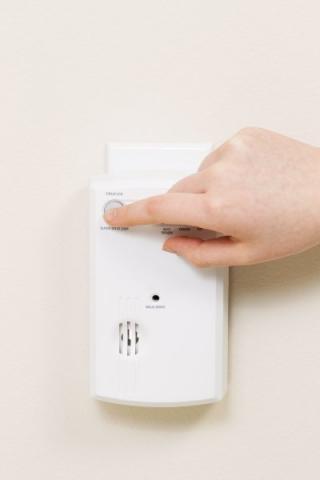Be aware of carbon monoxide poisoning – know the signs and symptoms

November is Carbon Monoxide Awareness Month and the Public Health Agency (PHA) is reminding everyone as the temperature drops and people turn up the heat to be aware of the symptoms of carbon monoxide (CO) poisoning.
CO poisoning can kill and in the winter months, when people use their heating appliances more frequently, there are often more incidents of carbon monoxide poisoning.
To minimise the risk of carbon monoxide poisoning the PHA recommends the following:
- sweep chimneys and flues every year if you use solid fuel;
- keep flues, air vents and grilles clear and ensure rooms are well ventilated;
- if you are in rented accommodation that incorporates gas appliances, ask your landlord to provide you with an up-to-date gas safety record. This is a requirement by law and is particularly important for students renting houses and flats;
- install an audible carbon monoxide alarm that meets British or European standards (BS Kitemark or EN 50291). These cost as little as £20 and can be purchased from large DIY stores and food retail stores. Alarms however, should not be used as a substitute for regular servicing of appliances.
Carbon monoxide is produced when fossil fuels such as gas, coal, oil, wood, petrol and paraffin burn without enough oxygen. It is a colourless, tasteless, odourless gas that is non-irritating, and as a result can be very hard to detect. Carbon monoxide poisoning can be fatal and affect anyone. However, children, students, older people, pregnant women and anyone with heart or breathing problems are more vulnerable to its effects.
Dr Gerry Waldron, Consultant in Health Protection at the PHA, advised: “Carbon monoxide poisoning can be fatal and can also cause long-term health problems if people are exposed to low doses over a long period of time. The signs and symptoms of carbon monoxide poisoning are often mistaken for other illnesses such as food poisoning or flu – the symptoms can be similar to flu but without a raised temperature. Please look out for these signs and symptoms and consider if carbon monoxide poisoning could be the cause if they are present.
“Anyone who suspects they may be experiencing carbon monoxide poisoning should immediately turn off all appliances, go outside and seek medical help from a qualified healthcare professional. Appliances should not be used again until they have been serviced by a registered engineer.”
Chief Medical Officer Dr Michael McBride urged the public to be aware and vigilant in their homes: "Carbon monoxide poisoning continues to cause preventable deaths in Northern Ireland. There is a good reason why carbon monoxide poisoning is often called the silent killer because you cannot see or smell the gas. The symptoms can also easily be confused with other common conditions. I would urge people to be vigilant for the signs and symptoms of carbon monoxide poisoning, including headaches, nausea and vomiting, exhaustion, drowsiness, dizziness and light-headedness, ‘flu-like’ symptom, palpitations (feeling your heart beat oddly), chest pain and losing consciousness.”
Ends
